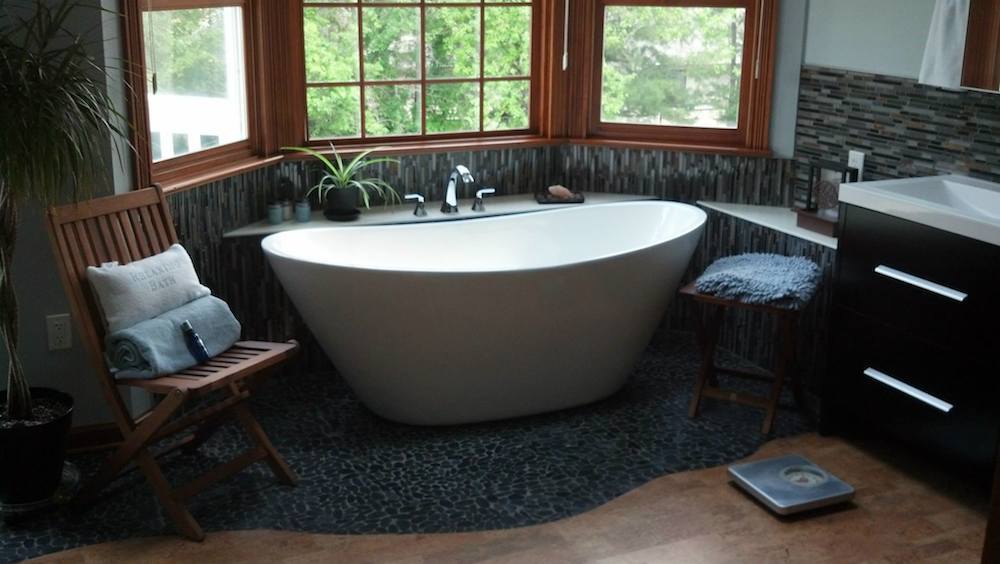 Many homeowners are eliminating at least one bathtub in their homes. Although tubs are luxurious places to relax, many people find that taking showers fits better into their daily lives. Stepping over outdated tub walls is another consideration, especially as one ages. If this sounds like your situation, a tub to shower conversion may be the type of renovation you need.
Many homeowners are eliminating at least one bathtub in their homes. Although tubs are luxurious places to relax, many people find that taking showers fits better into their daily lives. Stepping over outdated tub walls is another consideration, especially as one ages. If this sounds like your situation, a tub to shower conversion may be the type of renovation you need.
Converting your tub into a shower takes careful consideration before you begin the process. For most bathrooms, a dream shower can fit into the footprint of an outdated bathtub. Here are some remodel tips to ensure that you get the shower conversion that’s right for your space.
Measure everything precisely down to 1/8 inch and write it down. Most tubes are 60 inches wide, an ideal width, but depth can be a problem. You’ll need at least 32 to 34 inches from the wall to the shower door. You’ll also need a finished ceiling height of at least 80 inches and a minimum interior space of 30 by 30 inches. If the toilet is located adjacent, make sure there will be a minimum of 15 inches between it and the location of the shower door. Consider a doorless shower if you don’t have the minimum clearance.
Once you have determined the existing space is large enough, four other elements will need to be addressed: plumbing, shower pan, wallboard and tile.
Existing water feeds will need reconfiguration to support a new diverter and trim. Tub drains are generally only 1-1/2 inches in diameter while most building codes require shower drains to be 2 inches, thus requiring new piping. The shower pan must be poured to achieve adequate sloping to the drain. Installation of a seamless waterproof membrane between the pan and floor tile is recommended to prevent seepage from to the floor below.
Crucial bathroom tips in a tub to shower conversion involve the wallboard and tile. Although one-piece acrylic systems are touted by some as the ideal solution, these are often placed over existing walls, which can harbor mold and eventual rot. Make sure that mold-resistant backer board is placed behind tile, which needs to be installed at least to the height of the showerhead. The joints between all tiles will need grouting and sealing to further retard mold growth behind the tile.

